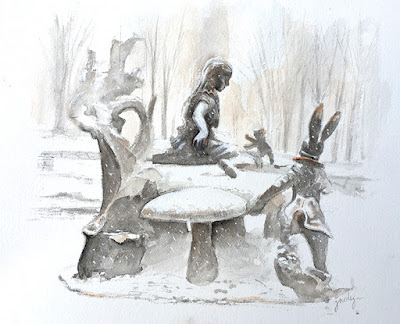 (this was artfully stolen from the internet)
(this was artfully stolen from the internet)J.D. Salinger, the famously reclusive author whose novel, “The Catcher in the Rye,’’ was one of the best-selling books of the 20th century, died at his Cornish, N.H. home. He was 91.
Mr. Salinger died of natural causes Wednesday, his son, Matt, said in a statement from Harold Ober Associates, Mr. Salinger’s literary agency.
“Despite having broken his hip in May,’’ agency officials stated, Mr. Salinger’s “health had been excellent until a rather sudden decline after the new year. He was not in any pain before or at the time of his death.’’
He left New York City more than a half-century ago, trading the urban literary life for rural Cornish. Neighbors and most who knew him in surrounding towns respected his privacy and usually refused to talk with reporters and photographers who came seeking the region’s most famous resident. Mr. Salinger, meanwhile, went about his quiet life undisturbed, chatting occasionally with those whose paths he crossed regularly.
In area bookstores, some of which made it a point to keep his works on display, those who knew him by sight would see him pass by in the aisles.
“Catcher in the Rye’’ is estimated to have sold more than 60 million copies worldwide since being published in 1951. It continues to sell about 200,000 copies annually.
A staple of student reading lists, the novel boasts one of the most celebrated characters in post-World War II American fiction, its narrator, Holden Caulfield.
Holden is a latter-day Huckleberry Finn: slightly older, far more knowing, and considerably less resilient. At once cynical and sensitive, the 16-year-old has just been expelled from prep school and decides to spend a few days on his own in New York. Manhattan is the Mississippi on which he floats (Checker cabs are for Holden what a raft is for Huck) as he obsessively seeks to pierce the “phoniness’’ of adult society while trying to maintain his increasingly unsteady equilibrium.
A comparable spiritual yearning characterizes Mr. Salinger’s other best-known literary creation, the Glass family. Their brilliance and neuroses emblazon his other works, “Nine Stories’’ (1953), “Franny and Zooey’’ (1961), and “Raise High the Roof Beam, Carpenters and Seymour: An Introduction’’ (1963).
The Glass family members who figure most prominently in the books are Holden’s rough contemporaries. In other Salinger works, such as the stories “For Esme With Love and Squalor’’ and “Teddy,’’ characters are even younger. Childhood and adolescence held a special fascination for Mr. Salinger, something noted by both admirers and detractors.
Alex Note: I read Catcher in the rye as a kid and it became my favorite book. His passing has inspired me to read his other works. He was a great mind and a crazy mind. Genius and crazy are often next door neighbors. They are Laurel and hardy, abbot and costello...


No comments:
Post a Comment